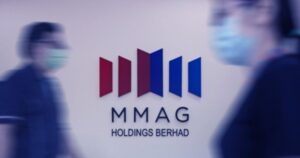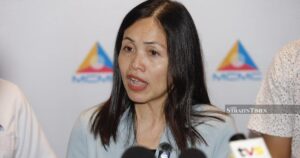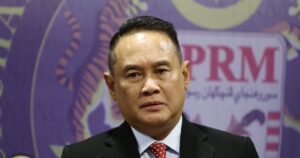THERE are ambitious business startups that focus, initially, on revenue generation and market-share capture instead of profitability.
The medium- or long-term hoped-for exit point for shareholders of such businesses is the initial public offering or IPO of their companies’ shares on a stock exchange like Bursa Malaysia, the Singapore Stock Exchange or the mighty New York Stock Exchange.
On the journey to a potential fat payday for capitalists who take on the sizable risk of investing in a startup at various points of its maturation process, from private to public ownership, many terms describe the funding rounds.
Some such terms are seed injecting, angel investing, venture capital funding and then an alphabet soup of capital-raising rounds like Series A, Series B, Series C and possibly more before the potentially big payoff of an IPO.
Bear in mind hundreds of thousands of businesses are started by hopeful entrepreneurs everyday everywhere. Most fail.
The often bandied about global statistic is that 90 per cent of new businesses fail. This means that for every 10 new startups, only one will survive beyond five years.
Also, most survivors never make it big (My experience of nurturing two viable businesses for decades that have stubbornly remained diminutive corroborate that truth).
However, in the first half of the 1990s, I had the privilege of writing about big companies run by household-name tycoons, many of whom preside over even larger businesses today.
So, although I failed to catch the “Big Time Success Bug”, I have learnt enough — over the miles and years — to co-opt two startup metrics that can apply to ambitious employees, professionals and small-business owners.
Those business startup metrics are “burn rate” and “runway”.
BUSINESS METRICS
Within promising startups careening toward public listings, aided by the angel investors, venture capitalists and alphabetical serial investors, the vital business metric of profitability takes a backseat — for a while — to top line sales (or revenue) and potential market share.
Eventually, though, profits will matter, as does positive cash flow. But the amount of time a promising business needs to reinvest almost all inflowing revenue, plus all borrowings and intermediately raised capital, into expanding its market share can be lengthy. Case in point: Amazon.com.
Everyone knows Amazon is the tentacular global behemoth that once saw Jeff Bezos, its major shareholder, stand as the wealthiest person on Earth (from 2017 to 2021).
At the time of this writing, Aug 5, despite the growingly unpopular Elon Musk holding that coveted title with a total net worth of US$357 billion according to the daily updated Bloomberg Billionaire Index (www.bloomberg.com/billionaires/), Bezos’ wealth stands at US$234 billion, which places him fourth globally.
Bezos founded Amazon in 1994. It began selling books online in 1995; and yet it kept losing money until 2002. You see, Bezos was building a retail juggernaut to dominate Earth. I dare say he succeeded.
Such accounts of immense corporate heft and success are impressive, yet have little to do with the real lives of regular people like you and me. Or do they?
TOOLS TO COMPREHEND
The two metrics I mentioned above, burn rate and runway, can first be understood and then, second, “folded into” our respective personal finance kits as analytical tools to comprehend our cash flow pattern and the required size of our Emergency Buffer Fund (EBF).
Perhaps these descriptions will make things clearer:
Burn rate — the gross burn rate of a company is the amount of cash it consumes each month to pay its bills without accounting for any inflowing revenue. The net burn rate is the gross burn rate minus inflowing revenue.
Runway — it’s more complete name is “cash runway”. Just as a plane needs a sufficiently lengthy runway, say around four or five kilometres long, to start up, move, build speed, gain lift and then take off, a company’s runway is measured by the number of months it can operate based on the amount of cash it has today, and its net burn rate.
As individuals, we should aim to live our economically productive years on a positive cash flow basis. If we succeed, then our personal runways will be longer than our entire working careers, which may typically last three to five decades.
Then, when we finally stop working for active income or, figuratively, come in for a landing, our remaining runway will either be long enough… or not.
The chief determinants are:
1. The rate our retirement nest egg spins out passive income; and
2. The pace at which we spend money in retirement.
So, take a fresh look at your career, assuming you are still working, and estimate the remaining years or, better still, decades you have to earn an active income. Then calculate your monthly and annual cash flow surpluses.
After that, channel your surpluses into savings and investments that turn your — perhaps — modest current trickle of passive income into an eventual torrent.
If you succeed, you will outlive your money and thus be able to bequeath real wealth to your loved ones or to society.
The needed tools are now in your hands.
© 2025 Rajen Devadason
Rajen Devadason, CFP, is a securities commission-licensed Financial Planner, professional speaker and author. Read his free articles at www.FreeCoolArticles.com; connect with him on LinkedIn at www.linkedin.com/in/rajendevadason, or via [email protected]. You may also follow him on X @Rajen Devadason and on YouTube (Rajen Devadason).
© New Straits Times Press (M) Bhd






